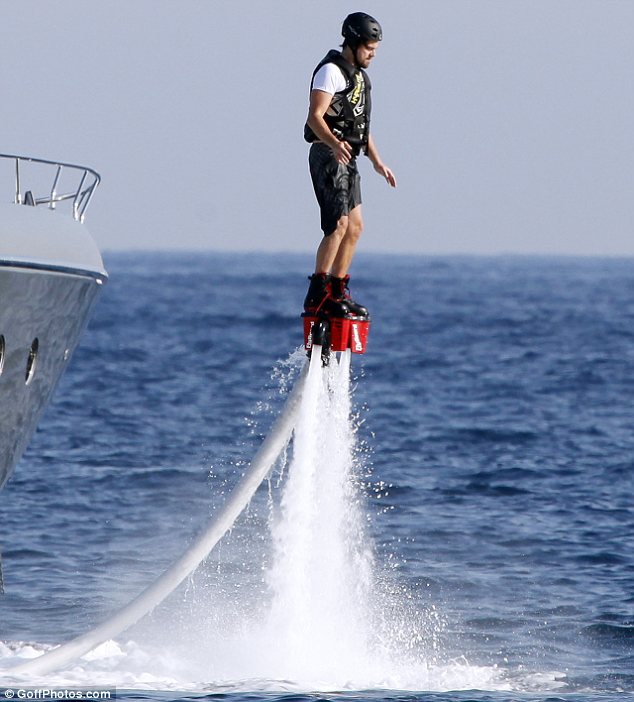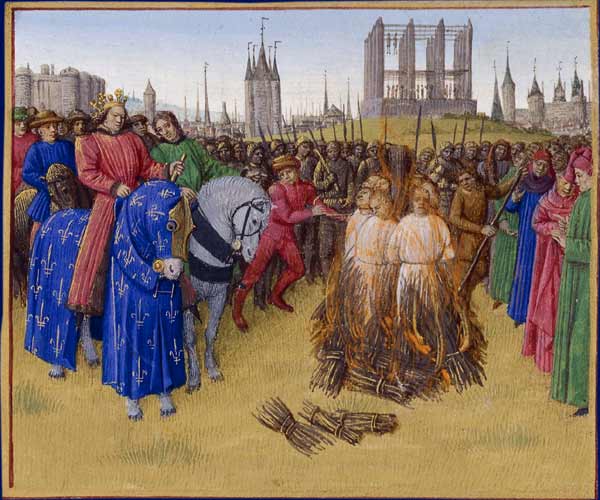— ISIS and the CIA Vie for the Claim to Divinity

One would be hard-pressed to find evidence for which form of torture is more brutal: immolation or waterboarding. There is little evidence from victims of burning to describe the extent of their pain. Moreover, survivors of immolation generally haven’t experienced drowning in order to decide which is the more violent ending. We have also not seen proof of whether the strategy of self-drowning, in a sea, a river, or a public pool, has been used by Arab Spring protestors, Buddhist Priests, or Kurdish activists to express and stage their outrage at political or economic hardship. The image of fire has an inherent stage effect that water is incapable of conjuring. One can exempt turbulent, stormy seas; to witness the power of their rage is unparalleled. The key difference between the spectacle of fire and that of water lies in our ability to create and construct the power of fire again and again, and our inability to do the same with water.

The Imagination Realized
The Senate Intelligence Committee’s report on the CIA’s detention and interrogation program was released to the public in December 2014 without much fanfare or heated debate. The torture described in the report was never visually documented. It is hard to comprehend the extent of the cruelty involved in the simulated drowning procedure that detainees were subjected to, even if one were to attend the sessions themselves. It is also equally hard to empathize with their pain by listening to the description provided by one of the victims of torture, no matter how eloquently it was delivered. However, we can use simple math to find out how many times Khalid Sheikh Mohammed was waterboarded. The answer is more than 180 times. That means more than 180 simulated deaths where he gets resuscitated in order to live through yet another near-death experience. Death by burning might be more painful, but at least it only happens once. Fire consumes the body from the outside in, while water eats the body from the inside out. In Discipline and Punish, Michel Foucault recalled the burning of heretics in medieval Europe to show that fire doesn’t stop at killing the body, such as when one dies of asphyxiation, but rather mutilates it beyond recognition, reducing it to ashes thrown to the wind. 1 Michel Foucault, Discipline and Punish: The Birth of the Prison, trans. Alan Sheridan (New York: Vintage, 1977), 3. Drowning, in most cases, leaves the body intact. When one stops breathing, its work is done.
All of this highlights the monumentality of fire in its power to erase the body and turn it to dust. By comparison, water maintains the integrity of the body after its work is done. Therefore, the horror experienced is understandable when people see fire captured on video in “Healing the Believers’ Chests,” produced by ISIS. In the video, ISIS demonstrates its power to terrorize the world by meticulously documenting every moment of the Jordanian pilot Muath Al-Kasasbeh’s burning and gradual transformation into a pillar of ash. Such courtesy was never given to the people who were tortured and sometimes killed in the darkness of the media blackout that the CIA has used to hide its waterboarding procedure.
Death as spectacle is not new. During the Inquisition in Europe, witches and heretics were burned in public plazas. In the Islamic middle ages, the Prophet Muhammad’s first successor, Abu Bakr, burned apostates. So did Ali, the fourth caliph, when he ordered the burning of homosexuals. Add to that the countless incidents of torture far worse than burning. There’s the one where Persian scholar Ibn Al-Muqaffa’ had pieces of his flesh sliced and grilled to be eaten by the executioners in front of his own eyes. In some cases, people had their eyes gouged out of their sockets with hot iron bars. In others, victims were slaughtered and decapitated and their heads were spiked on the tips of spears. Lately, many have been tortured, burned, dismembered, stabbed, and beaten to death in Syria, Iraq, Lebanon, Somalia, and Nigeria, among other countries. Most of these crimes are documented in photos and video.
ISIS’s horrifying achievement in the burning of Kasasbeh lies in the imaginative execution of a media event and not in the nature and method of killing.

The End of Cinema and the Crisis of Television
The history of cinema is full of scenes far worse than Kasasbeh’s burning. Some films address contemporary themes, for example, The Stoning of Suraya M., a 2008 movie that depicts the stoning to death of an Iranian woman accused of adultery. The horror of the scene is doubled because the stoning of Suraya is recent; had she not been stoned to death, she could be walking amongst the living now.
In a historical drama, both the victim and the killer are deceased, which absolves us from feeling solidarity, or feeling responsible for their rescue. Suraya, on the other hand, is contemporary, and deserves our attention and sympathy and at points our anger and rage. Such a reaction is a result of the crime. Yet the stoning and the burning are still made tolerable by our knowledge of its essence as a reenactment. We might express rage and disgust, but we also keep in mind that the director’s imagination might have embellished things a bit. This knowledge of the artificial aspect of storytelling helps keep angry and outraged spectators in our seats and suppresses our need to respond to her bloody persecution, even though we see her suffering in silence, and even though we do not know whether she died immediately or had a slow and agonizing death after the first stone was cast. Watching her, we accept her suffering, if incredulously, because we know deep down that what is taking place in front of us is a simulacrum of dying and not dying itself.
But the hyperrealism of Kasasbeh’s immolation strips Suraya’s stoning scene of its cinematic power and erases it completely. In doing this, ISIS was able to vanquish cinema and whatever authenticity it has left.
Consequently, news agencies didn’t dare broadcast the burning of Kasasbeh in its entirety. Everything before it and after it was shown. The absent moment of death was either to be imagined or to be sought elsewhere and seen at one’s own risk. The power of television in this case lies in what is omitted, not what is included. The fact that the viewer was able to independently view the clip, and therefore to be reminded of its absence on television, is a betrayal of television’s original promise of live coverage. ISIS’s control of the narrative around Kasasbeh’s burning made watching live news akin to watching a football match: when viewers watch Lionel Messi score in a sports news report, they are taken through stages of setting the scene to create tension prior to the celebrated moment of catharsis, similar to watching a murder scene in a movie where the audience is privy to what is about to take place. Given all of this, should we finally now declare that cinema is dead and that television is taking its final breath?
Experiencing death in film and television is pure fiction, since the source of real news has long vacated the space of the studio. Journalists and news producers are left to entertain a shocked and awed audience.

YouTube Has a Deadly Fever
It seems that the video clips receiving the largest viewership are the ones representing violence or horror. Last year’s most-viewed clip online was that of a dog dressed up as a giant spider. The video creator prepared the giant spider-dog and released it in carefully staged public space with spider webs and fake human body parts hanging from fences. The unsuspecting passersby were startled and terrified by the sudden appearance of a giant spider on four legs.
This and many other clips have certainly undermined the power of film to conjure emotions. The ultimate point of this video is to make fun: to make fun of cinema and its special effects and those who fall for them. YouTube enables the recreation of cinematic tragedy as comedy. This facility allows the type of viral infiltration a phenomenon like ISIS uses for its benefit. This virality and its social reach are at a point of no return.
YouTube’s administrators have repeatedly banned the broadcasting of the burning scene of the Kasasbeh video. But ISIS kept re-uploading it until it was sure to have achieved its purpose. The Kasasbeh execution clip differs categorically from all other torture videos that have been censored in the past. These torture videos usually follow a script in which an executioner taken with rage beats his victim. There’s an improvised and unplanned quality to the sequence of events—after growing tired of beating the victim, the executioner stops for breath, only to then begin stabbing or kicking his victim, or whipping him out of sheer frustration. This process is repeated again and again until the victim dies, leaving the executioner at a loss for how to satiate the desire to inflict pain. Usually, such an outcome illustrates the futility of the act of torture. With such uncertainty, these clips resemble car accidents or natural disasters: no party is privy to the final outcome.
This is where the Kasasbeh execution scene differs: the viewer already knows what’s going to happen at the end. Instead of responding according to instinct, the executioners relish in the details of setting a festive stage for the main event. The scene here is more reminiscent of Dante’s Inferno than any that comes about through a judicial process. Viewing the clip again and again becomes an attempt to bring the pilot back to life, instead seeing him die yet again in an infinite loop of horror and cruelty.
Here we, as mortals, find ourselves at the mercy of ISIS’s divinity, facing our own inferno. Life may be short, but torture is eternal. ISIS has made us fear torture the way believers fear hell. This fear doesn’t translate to hatred, but rather leads directly to our utter submission to the omnipotent power of such an entity. Our only salvation becomes to deny all gods and all religions—not an easy task when dealing with such an awesome force.
Kasasbeh’s execution clip has imbued ISIS with superhuman powers that attract our curiosity. The more the video is passed around YouTube, the less credible everything else on the website becomes. By refusing to broadcast it, the news media implicitly admits to ISIS’s supremacy and the impossibility of producing anything that comes close to what they create.
ISIS has superseded the technology that gave birth to it. Alas, this truth comes with a hefty price that humanity will spend a long time paying for in tears, blood, and helplessness.
×


